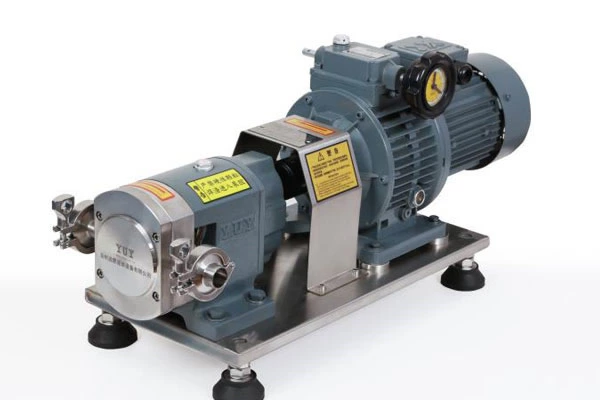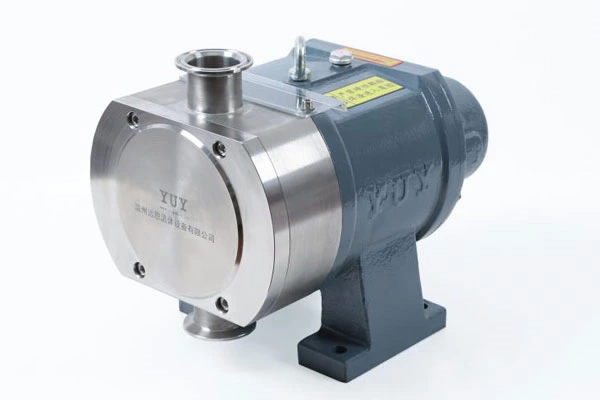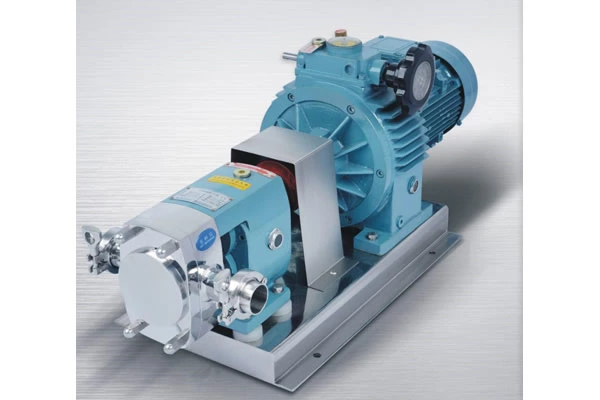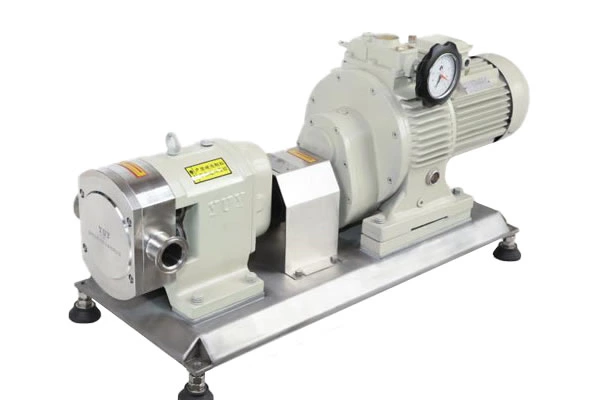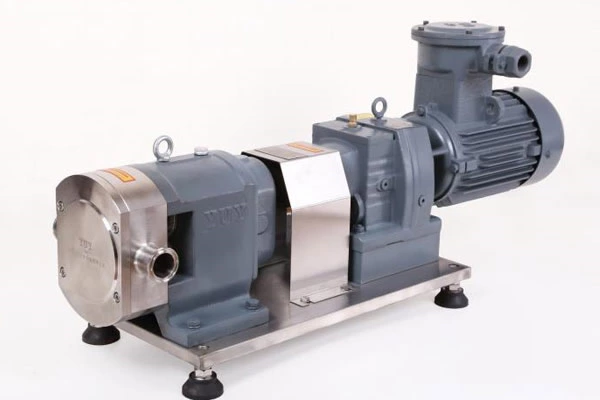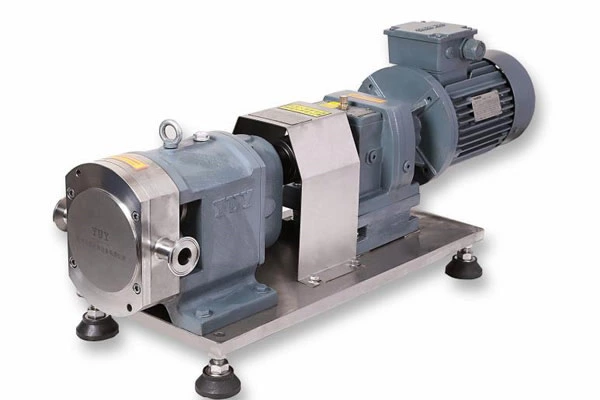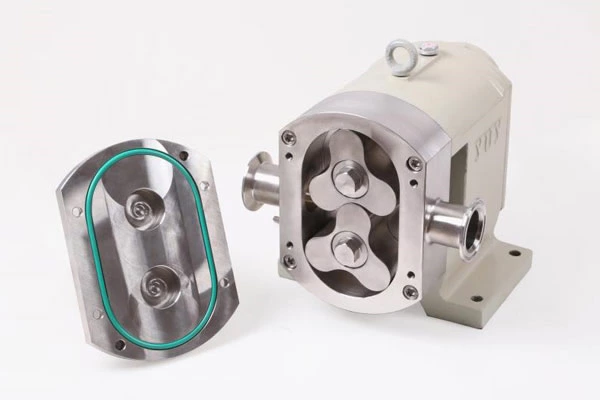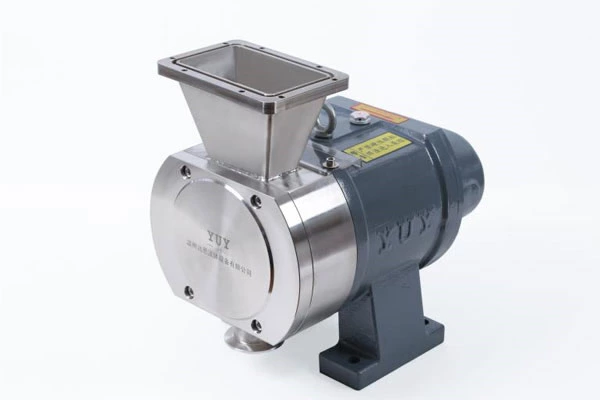Basic Working Principle Of Sanitary Rotary Lobe Pumps
Sanitary Rotary Lobe Pump uses the rotation of the screw to suck and discharge liquid. The middle screw is the active screw, which is driven by the prime mover to rotate, and the screws on both sides are driven screws, which rotate in the opposite direction with the active screw. The threads of the main and driven screws are double-start threads.
Due to the mutual meshing of the screws and the close fit between the screws and the inner wall of the liner, one or more sealed spaces will be separated between the suction port and the discharge port of the sanitary rotary cam pump. As the screws rotate and mesh, these sealed spaces are continuously formed at the suction end of the pump, sealing the liquid in the suction chamber, and continuously moving from the suction chamber along the axial direction of the screw to the discharge end, and continuously discharging the liquid enclosed in each space, just like a nut being continuously pushed forward when the thread rotates. This is the basic working principle of the sanitary rotary cam pump.
The sealing surface between the screw and the housing is a spatial curved surface. There are non-sealed areas such as ab or de on this curved surface, and many triangular gaps abc and def are formed with the groove part of the screw. These triangular gaps form a liquid channel, so that the active screw groove A is connected to the groove on the driven screw. The grooves go around to the back along their own spirals and are connected to the grooves D and E on the back respectively. Since there are triangular gaps a'b'c' similar to the front on the sealing surface where grooves D, E and groove F (which belongs to the other spiral) are connected, D, F, and E will also be connected. In this way, grooves ABCDEA will form an "∞"-shaped sealing space (if a single-start thread is used, the grooves will axially coil around the screw, penetrate the suction and discharge ports, and cannot form a seal). It is not difficult to imagine that on such a screw, many independent "∞"-shaped sealing spaces will be formed, and the axial length occupied by each sealing space is exactly equal to the lead t of the cumulative rod. Therefore, in order to separate the suction and discharge ports of the screw, the length of the thread section of the sanitary rotary cam pump screw must be at least greater than one lead.
